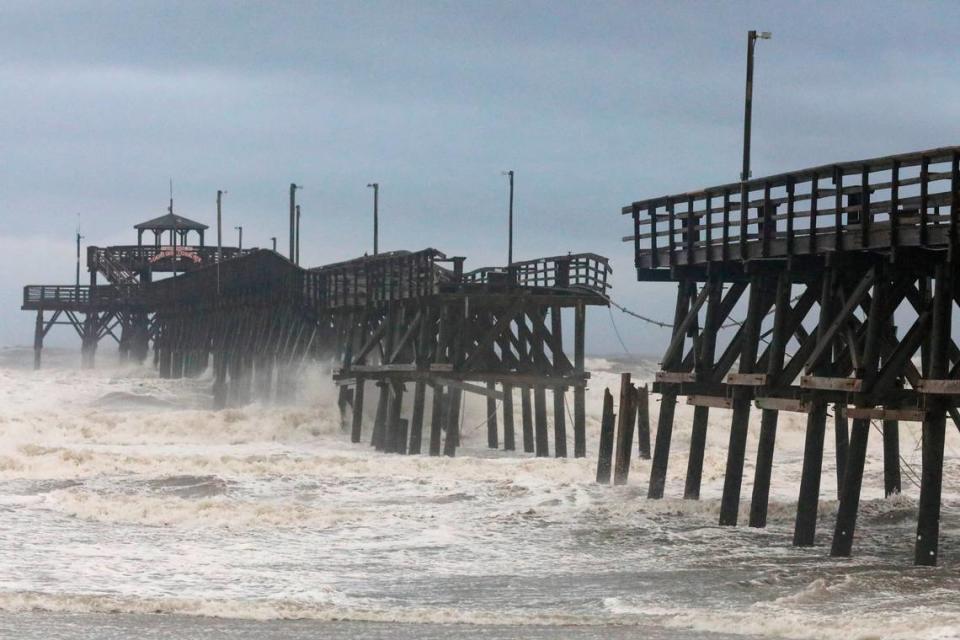Hurricane Ian has forever altered Horry County beaches. But just how badly remains unknown.
Kathy Morrison took a break from completing word searches in her puzzle book Oct. 5, relaxing in a chair stationed close to Cherry Grove’s famous fishing pier.
Morrison, from Boone, N.C., and her friend Lynn Caudill were enjoying the last few hours of a quick four-day getaway to North Myrtle Beach that started days after Hurricane Ian ripped across coastal Horry County.
“I saw it on TV and I just wanted to cry,” Morrison said of damage to the pier, a portion of which was swept into the Atlantic due to Ian’s powerful storm surge.
A U.S. Army Corps of Engineers surveyor said Wednesday the prized 60 miles of coastline that make the Grand Strand one of America’s most popular vacation spots will never be the same.
“It’s possible that some of the sand just shifted into (other) locations, or that it’s been wiped off the beach,” geographer Sonja Zindars said.
Since Sunday, crews have been creating 3D maps of areas most impacted by Ian - from Charleston to Garden City. The work should be complete by Friday with a final report two weeks later.
That information will help determine whether South Carolina qualifies for federal aid to replenish its beaches.
Zindars and her team were in North Myrtle Beach on Wednesday.
Hours before Hurricane Ian made landfall near Georgetown, the U.S. Geological Survey warned of expected damage to thousands of South Carolina dunes, with up to 11 percent of them pushed under water.
“This beach provides storm reduction to the infrastructure and the lives that are behind it,” Zindars said. “Without these renourishment projects to protect storm damage, we’d see a lot more destruction.”
In Myrtle Beach on Tuesday, Gov. Henry McMaster said state officials are also putting together damage assessments that will help determine eligilbity for federal aid.
“We’re still in the process of cleaning up,” he said. McMaster toured Georgetown and Pawley’s Island on Saturday and was concerned by what he saw.
“Living on this beautiful coastline, this is what we can expect,” he said. “I guess the best thing we can do is be prepared and be informed about what we need to do.”





